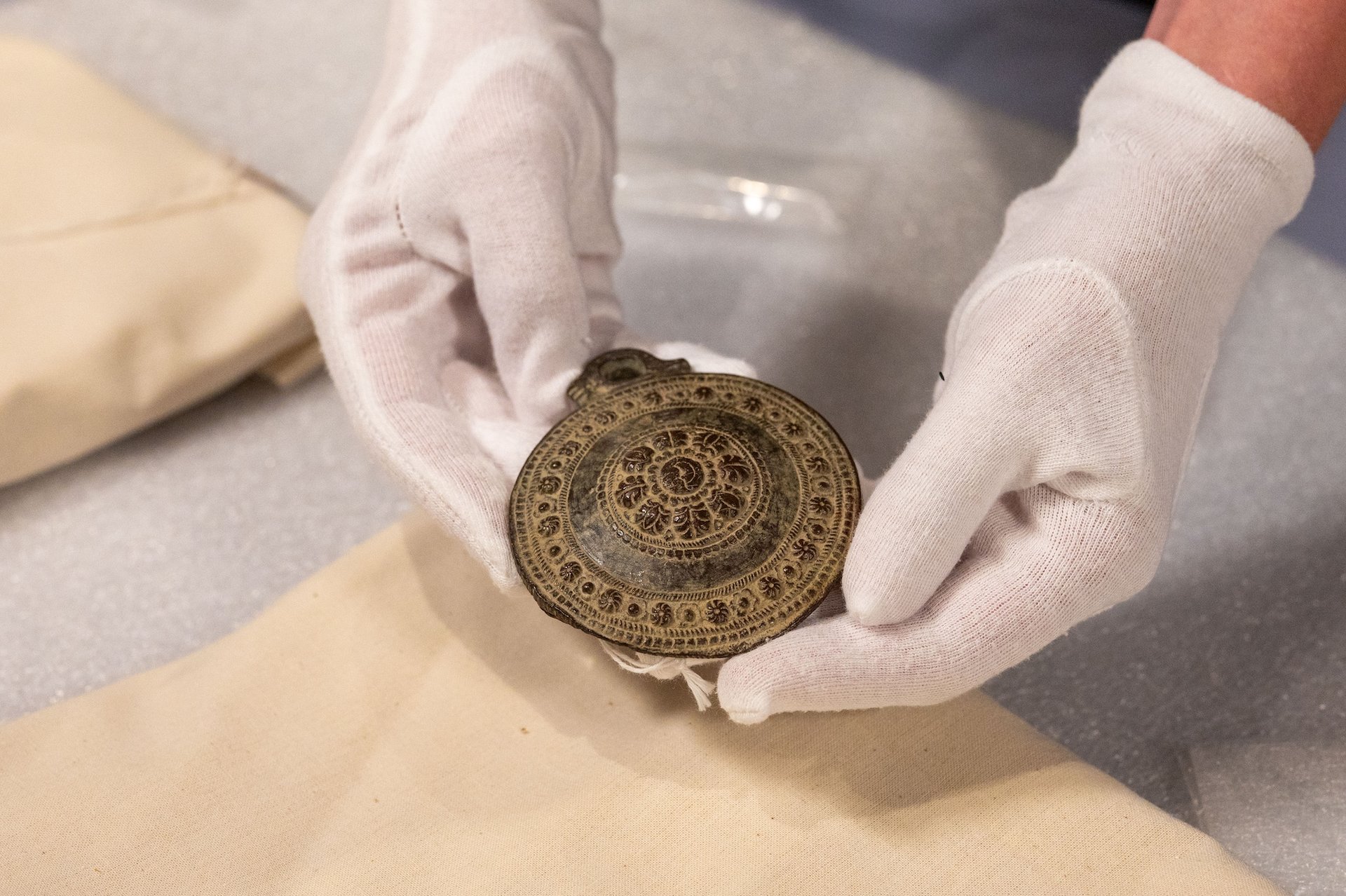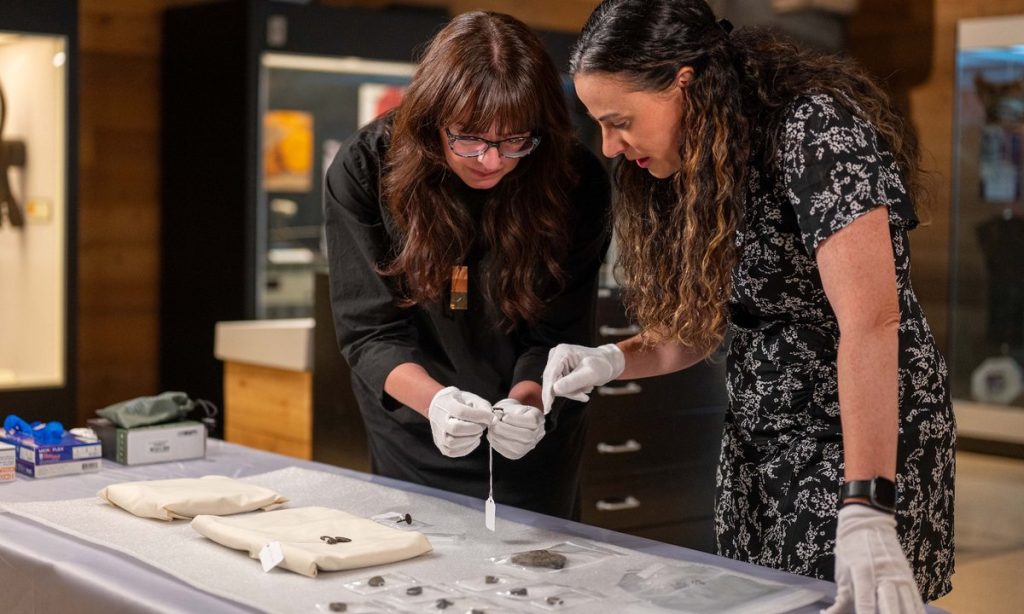A group of possibly-medieval artefacts that was discovered in a thrift store in western Canada will form the basis of a unique, real-time learning lab for students at Simon Fraser University (SFU) near Vancouver.
Sabrina Higgins, an associate professor of Aegean and Mediterranean societies and cultures at SFU, tells The Art Newspaper that she has had “a huge amount of interest” in a course she has designed for the autumn semester around the unique find. Students will get to analyse the designs and materials with a view to identifying where and when the items originate from. Their research will culminate in an exhibition at the university’s Museum of Archaeology and Ethnology on the history and biography of the artefacts, as well as the ethical considerations that archaeologists and museums face.
The objects in question are 11 rings and two medallions, which Higgins believes are medieval. Determining their provenance will be part of the course itself. But the story of how they arrived at SFU is as intriguing as the origins of the artefacts themselves.
“I was approached by Thrifty Boutique over a year ago, when one of their volunteers reached out to me regarding some objects that they had for sale in their store” Higgins explains, referring to a charity shop for the hospice in Chilliwack, an agricultural community east of Vancouver in the Fraser Valley.
The complete set of artefacts donated to SFU for study Photo: Simon Fraser University/Museum of Archaeology & Ethnology
A volunteer had found the rings and medallions while sorting through a box of donations and displayed them for sale at around C$30 ($21) each, Higgins says. A customer with a background in archaeology happened to notice them and advised the manager that the objects might be ancient. The manager removed them from the shelves and contacted Higgins, arranging an appointment with her at the university’s Museum of Archaeology and Ethnology as part of a potential donation.
“Normally we do not accept objects that do not have a known provenance, and we had a lot of internal discussions around the ethics of taking these objects,” Higgins says. Ultimately she and her colleagues decided that accepting the belongings into their care was better than them potentially being sold off.
“We also considered the educational value of these objects, and my colleague Cara Tremain and I pitched the idea of designing a class around them in which our archaeology students could learn how to research objects of unknown provenance from start to finish,” Higgins says. As a result, the museum opted to accession the objects.
Higgins says she thinks the artefacts most likely originate from somewhere within the boundaries of what was once the Western Roman Empire. She adds: “The shapes, designs and construction make me think that these are medieval, as the Romans typically used slightly different materials and techniques.”
The most interesting of the artefacts, says Higgins—who in addition to being an expert in early Christian archaeology is the director of SFU’s branch of the Stavros Niarchos Foundation Centre for Hellenic Studies—is the smaller medallion. It bears a “Christogram”, or the sign for Christ, consisting of the Greek letters “CH” and the Roman letter “RH.”

One of the artefacts donated to SFU for study Photo: Simon Fraser University/Sam Smith
The course Higgins and Tremain have designed around the objects will be a first of its kind at the university “whereby students are involved in the entire process of accessioning a collection, while simultaneously dealing with the ethical implications of taking on this particular collection”, Higgins says. They will also gain hands-on experience, she adds, including archival research, scientific analysis and the use of digital technologies to study objects. Students will also help create the exhibition highlighting both the objects and the process of researching them.
Provenance will be hard to determine, Higgins says, especially on the side of the history of the collection, as no one knows who gave the artefacts to Thrifty Boutique. But provenance can potentially be determined through scientific analysis and looking at comparable materials in archives.
“It’s very unlikely, however, that we will be able to determine the provenance of most of these artefacts,” Higgins says. But “for our students, this will be a once-in-a-lifetime chance to work with materials that have no provenance and through the experience will gain first-hand knowledge of the detective work that goes into archaeology and museum studies.”
